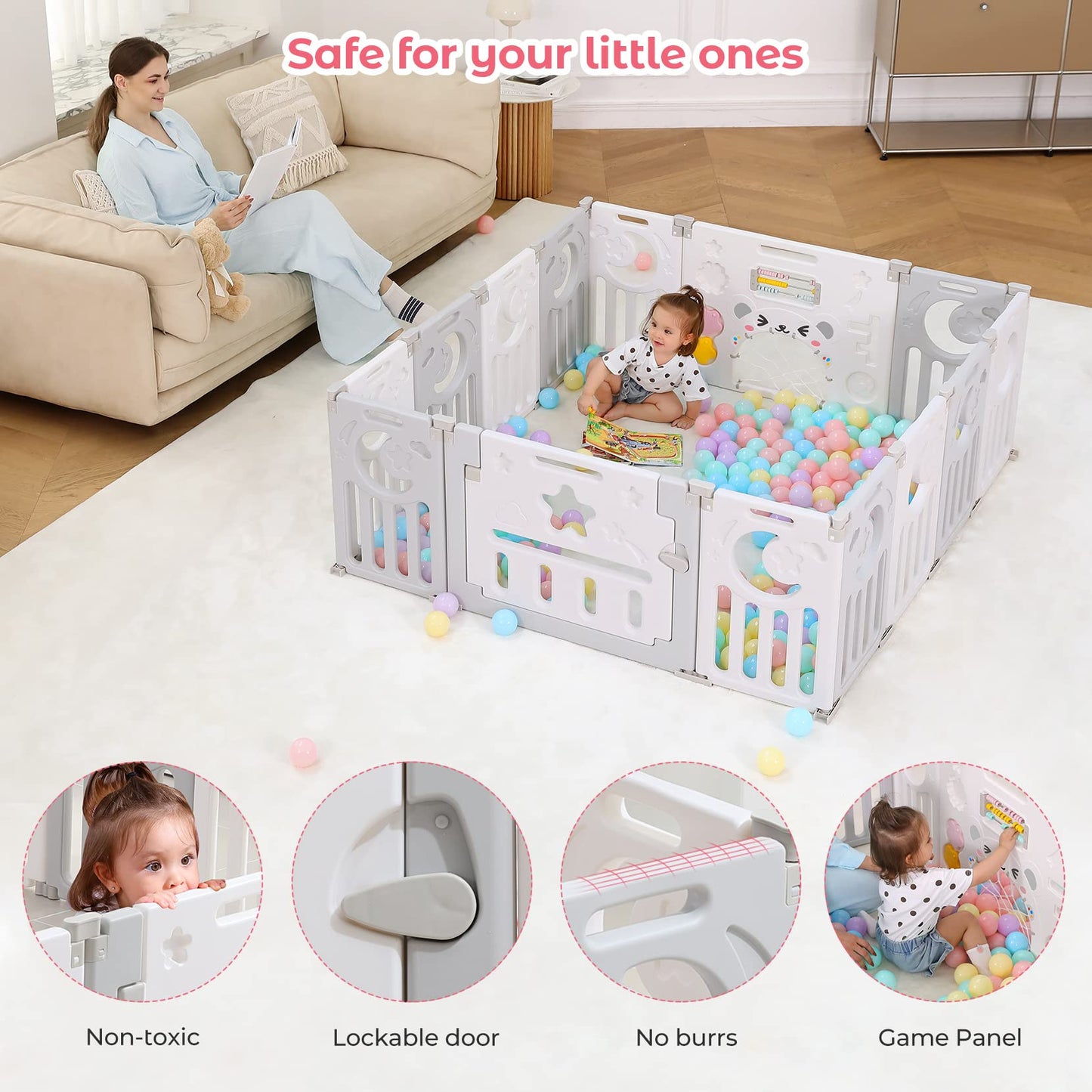The height of a playpen is often linked to your baby's age, as your baby's age affects their mobility and mobility. The following is the general relationship between the height of the playpen and the age of the baby:
0 to 6 months: At this age, babies are usually not yet able to sit up or crawl. Therefore, the height of the playpen is generally low, mainly to prevent the baby from rolling out of the bed or crib. Generally speaking, the height of the fence should be around 20 inches (about 50 cm).
6 to 12 months: At this age, babies typically begin to crawl, stand, and try to walk. The height of the playpen needs to be increased accordingly to prevent the baby from climbing out of the playpen or having an accidental fall. Generally speaking, the height of the fence should be between 24 and 26 inches (about 60 and 65 cm).
1 to 2 years old: At this age, babies have developed higher mobility and are able to try jumping and climbing. The height of the playpen needs to be higher to prevent babies from climbing out of the playpen. Generally speaking, the height of the fence should be between 26 to 30 inches (about 65 to 75 cm).
It is important to note that these heights are only a general guideline and do not apply to all situations. Each baby's development rate and mobility may vary. Therefore, when choosing a playpen, it is recommended to refer to the manufacturer's recommendations and product descriptions to ensure that the height of the playpen is appropriate for your baby's age and stage of development.
In addition, the stability and safety of the fence are also very important. Regardless of the height of the fence, it should be sturdy and stable to prevent your baby from pushing over or climbing out of the fence.

When considering the relationship between playpen height and your baby's age, there are some other factors to consider:
Your baby's height and weight: While age is an important factor, your baby's height and weight can also influence playpen selection. Taller or heavier babies may need a taller and sturdier playpen to ensure they cannot climb over or knock it over.
Baby's development stage and mobility: Babies of different ages may have different development stages and mobility. Some babies may start crawling, standing, or walking earlier or later. Therefore, your baby's specific development needs to be considered to choose a playpen that is appropriate for their current mobility abilities.
Home environment and needs: The living environment and needs of different families will also affect the choice of fence. If your home has stairs, steep slopes, or other potentially dangerous areas, the height of your fence may need to be increased accordingly to provide greater security.
Fence design and construction: The design and construction of a fence can also affect the age range it is suitable for. Some playpens have adjustable heights to adjust as your baby grows. There are also playpens that have removable side doors to make it easier for your baby to get in and out.
To sum up, the height selection of the baby playpen should take into account the baby's age, height, weight, developmental stage, mobility, home environment and personal needs. It is important to choose a fence that meets safety standards, is stable and reliable, and ensures that your baby can move safely and freely within it.

